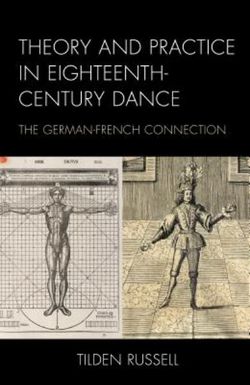

The German-French Connection
Hardback
Publication Date: 15/11/2017
This book is about the intersection of two evolving dance-historical realms--theory and practice--during the first two decades of the eighteenth century. France was the source of works on notation, choreography, and repertoire that dominated European dance practice until the 1780s. While these French inventions were welcomed and used in Germany, German dance writers responded by producing an important body of work on dance theory. This book examines consequences in Germany of this asymmetrical confrontation of dance perspectives. Between 1703 and 1717 in Germany a coherent theory of dance was postulated that called itself dance theory, comprehended why it is a theory, and clearly, rationally, distinguished itself from practice. This flowering of dance-theoretical writing was contemporaneous with the appearance of Beauchamps-Feuillet notation in the Chor graphie of Raoul Auger Feuillet (Paris, 1700, 1701). Beauchamps-Feuillet notation was the ideal written representation of the dance style known as la belle danse and practiced in both the ballroom and the theater. Its publication enabled the spread of belle danse to the French provinces and internationally. This spread encouraged the publication of new practical works (manuals, choreographies, recueils) on how to make steps and how to dance current dances, as well as new dance treatises, in different languages. The Rechtschaffener Tantzmeister, by Gottfried Taubert (Leipzig, 1717), includes a translated edition of Feuillet's Chor graphie. In the present book, Chapters 1, 2, and 5 have to do with how Taubert and his contemporary German authors of dance treatises (Samuel Rudolph Behr, Johann Pasch, Louis Bonin) became familiar with Beauchamps-Feuillet notation and acknowledged the Chor graphie in their own work, and how Taubert's translation of the Chor graphie spread its influence northward and eastward in Europe. Chapters 3 and 4 examine the personal and literary interrelationships between the German writers on dance between 1703 and 1717. Chapter 6 examines these writers' invention of a theoria of dance as a counterbalance to dance praxis, compares their dance-theoretical ideas with those of John Weaver in England, and assimilates them all in a cohesive and inclusive description of dance theory in Europe by 1721.
- ISBN:
- 9781611496611
- 9781611496611
- Category:
- Sociology: customs & traditions
- Format:
- Hardback
- Publication Date:
- 15-11-2017
- Language:
- English
- Publisher:
- Rowman & Littlefield Publishing Group, Incorporated
- Country of origin:
- United States
- Dimensions (mm):
- 236.98x156.72x20.57mm
- Weight:
- 0kg
Click 'Notify Me' to get an email alert when this item becomes available
Great!
Click on Save to My Library / Lists
Click on Save to My Library / Lists
Select the List you'd like to categorise as, or add your own
Here you can mark if you have read this book, reading it or want to read
Awesome! You added your first item into your Library
Great! The fun begins.
Click on My Library / My Lists and I will take you there
Click on My Library / My Lists and I will take you there
You can find this item in:
History of art / art & design styles
Sociology: customs & traditions
General studies
Sports & outdoor recreation
Dance
Show more
Show less
Reviews
Be the first to review Theory and Practice in Eighteenth-Century Dance.


Share This Book: